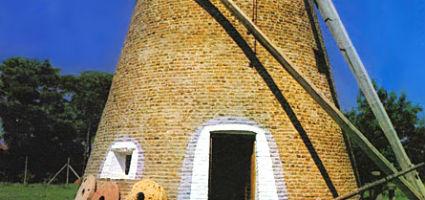2024. April 27. Saturday
The Exhibition Ward of the Csabai Homestead and the History of Grain - Békéscsaba
 |
Address: 5600, Békéscsaba Gyulai út 65.
Phone number: (66) 441-026
E-mail: mmm@bmmi.hu
Opening hours: 01.04-31.10.: Tue-Sat 9-17
|
Museum tickets, service costs:
|
Ticket for adults
|
300 HUF
|
|
|
Ticket for students
(under 26 years of age)
|
150 HUF
|
|
|
Ticket for pensioners
(under 70 years of age)
|
150 HUF
|
Crop raising was dispersed by people of the Körös culture in this region around 8000 ago. Scythian, Celt, Sarmata, German and Avar tribes were involved in crop raising beside animal husbandry. Their crop tanks and grinding tools have been found by archeologists.
The original settler tribes had experiences concerning crop raising when they arrived into the Carpathian Basin. Raising of corn in the ear significantly developed under the reign of the Anjou kings. According to charters from the 13-14th centuries, a great number of mills were built then during the peaceful years.
A census from 1560 already shows the uncertainty due to the Turkish reign. A little crop was documented in Békés and Mezőberény, but nothing in Csaba and other regions. Taxes paid to the Hungarian and Turkish landowners, as well as the wars impoverished the region and the people fled. The liberating wars ended when the fortress of Gyula was seized in 1694. The Cultivation had to be began again on untilled land. When the county was repopulated in 1715, only a few villages existed.
Priests, among them Tessedik Sámuel, helped a lot in boostering tillage. In the 19th century, many, among them Mokry Sámuel, Trefort Ágoston, Eötvös József try to advance development by buying varied machined from abroad.
Except from Cs. Szabó István: Békéscsaba, Crop Museum - TKM 308.)
The original settler tribes had experiences concerning crop raising when they arrived into the Carpathian Basin. Raising of corn in the ear significantly developed under the reign of the Anjou kings. According to charters from the 13-14th centuries, a great number of mills were built then during the peaceful years.
A census from 1560 already shows the uncertainty due to the Turkish reign. A little crop was documented in Békés and Mezőberény, but nothing in Csaba and other regions. Taxes paid to the Hungarian and Turkish landowners, as well as the wars impoverished the region and the people fled. The liberating wars ended when the fortress of Gyula was seized in 1694. The Cultivation had to be began again on untilled land. When the county was repopulated in 1715, only a few villages existed.
Priests, among them Tessedik Sámuel, helped a lot in boostering tillage. In the 19th century, many, among them Mokry Sámuel, Trefort Ágoston, Eötvös József try to advance development by buying varied machined from abroad.
Except from Cs. Szabó István: Békéscsaba, Crop Museum - TKM 308.)